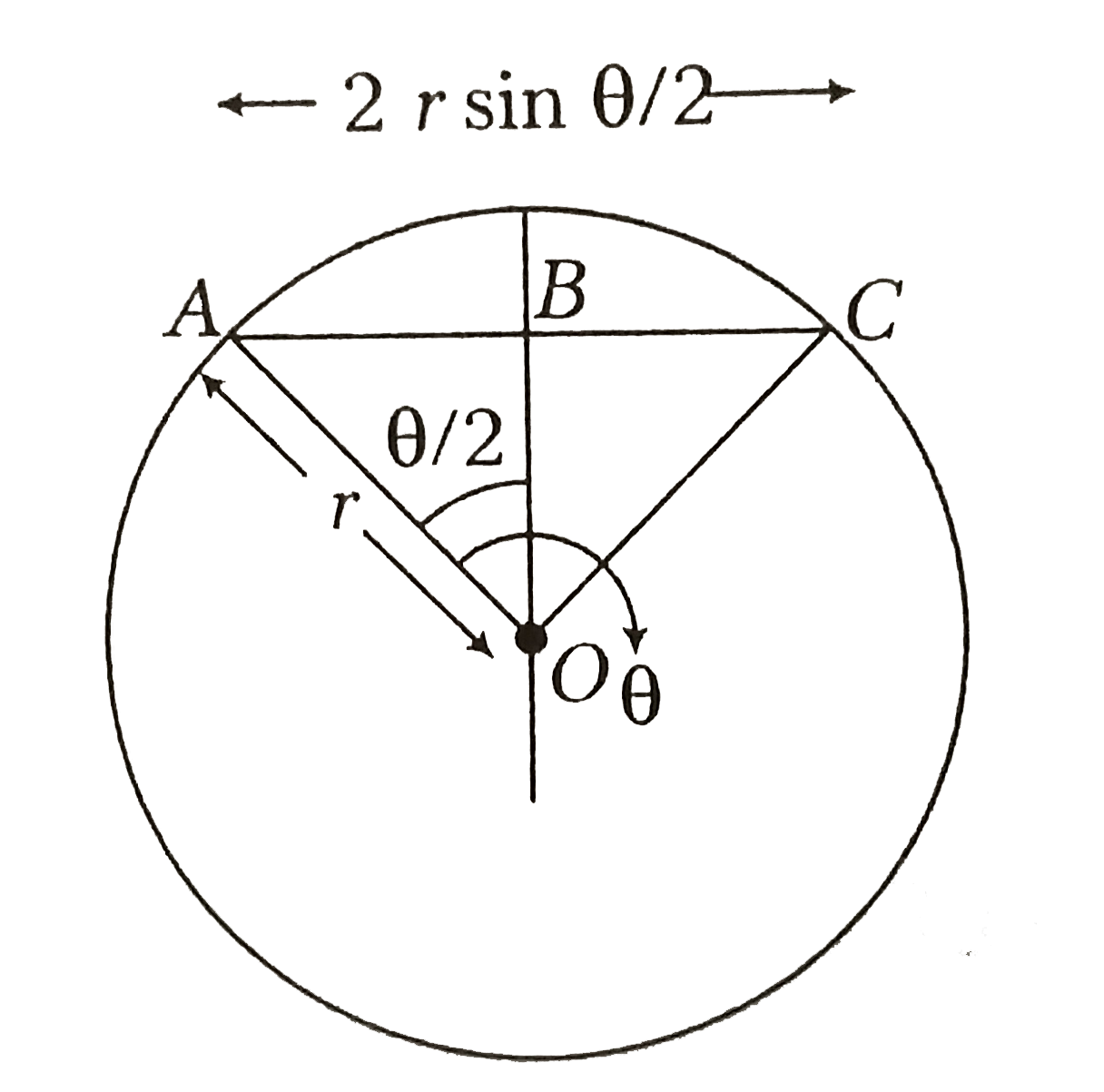A particle is moving uniformly in a circular path of radius r. When it moves through an angular displacement , then the magnitude of the corresponding linear displacement will be
A
2 r cos
B
2 r cot
C
2 r tan
D
2 r sin
Video Solution
Text Solution
The correct Answer is:D
The figure is shown as below

So, the magnitude of the corresponding linear displacement will be .
|
Topper's Solved these Questions
- CIRCULAR MOTIONBook:DC PANDEYChapter:CIRCULAR MOTIONExercise:Match the columns
Explore 3 Videos
- CENTRE OF MASS, LINEAR MOMENTUM AND COLLISIONBook:DC PANDEYChapter:CENTRE OF MASS, LINEAR MOMENTUM AND COLLISIONExercise:Level 2 Subjective
Explore 21 Videos
- COMMUNICATION SYSTEMBook:DC PANDEYChapter:COMMUNICATION SYSTEMExercise:Only One Option is Correct
Explore 27 Videos
Similar Questions
Knowledge Check
A particle is moving on a cicular path of radius 'R' . As it moves through an angular displacement θ, its linear displacement will be :
ARsinθB2Rcosθ/2C2Rsinθ/2DRcosθA particle moves through angular displacement θ on a circular path of radius' r'. The linear displacement will be:
A2rsin(θ2)B2rcos(θ2)C2rtan(θ2)D2rcot(θ2)A particle moves throught angular displacement θ on a circlur path of radius r. The liner displacement wil be
A2rsin(θ/2)B2rcos(θ/2)C2rtan(θ/2)D2rcot(θ/2)
A particle is moving in a circular path of radius r. The displacement after half a circle would be
View SolutionA particle is moving in a circular path of radius r. The displacement after half a circle would be
View SolutionA particle is moving in a circular path of radius 'r'. The displacement after half a circle would be
View SolutionA particle moves along a circular path of radius R. The distance and displacement of a particle after one completer revolution is
View SolutionA particle is moving along a circular path with uniform speed. Through what angle does its angular velocity change when it completes half of the circular path?
View Solution

